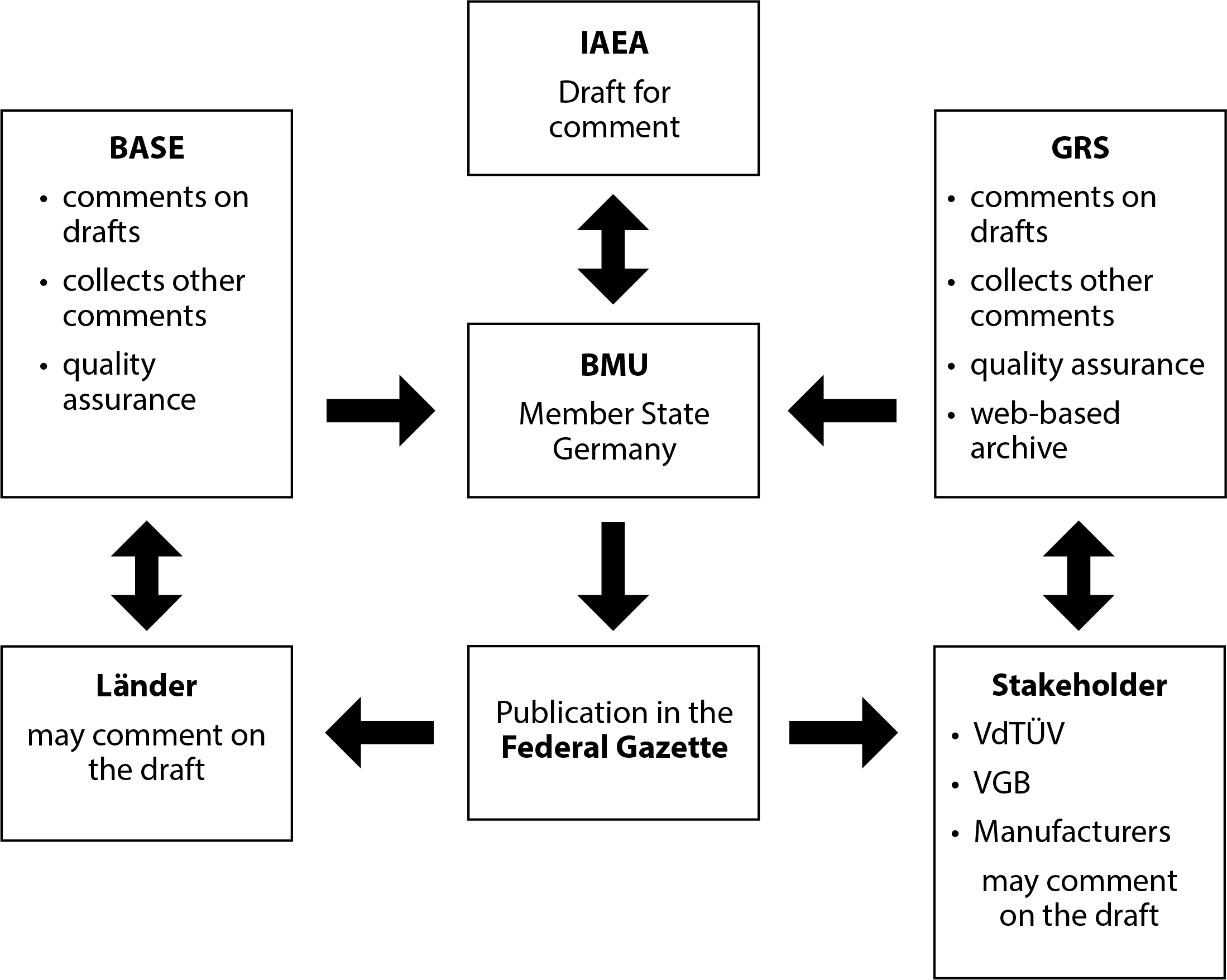
The IAEA safety standards are developed with the participation of the Member States. These appoint representatives to the Commission on Safety Standards (CSS) and its safety standards committees EPReSC (Emergency Preparedness and Response Standards Committee), NUSSC (Nuclear Safety Standards Committee), RASSC (Radiation Safety Standards Committee), WASSC (Waste Safety Standards Committee) and the TRANSSC (Transport Safety Standards Committee). The German Federal Government is represented in these rulemaking bodies by the Federal Ministry for the Environment, Nature Conservation and Nuclear Safety (BMUKN).
When a safety standard is discussed in the committees of the IAEA, the BMUKN may have an influence. Involvement of third parties is possible in particular by participating in technical meetings and during the comment process of the Member States.
In the early phase of drafting a safety standard, the IAEA invites experts to technical meetings and consultants’ meetings where first drafts are prepared. The BMUKN sends experts from Germany to the IAEA particularly for technical meetings whenever possible.
During the revision of a safety standard, at least once the safety standards committees submit a draft text to the Member States for a period of 120 days for comment. This is announced by the BMUKN in the Federal Gazette. Interested parties are given the opportunity to submit proposals for amendments to the draft safety standards to the BMUKN. These are compiled by the BMUKN and forwarded to the IAEA. GRS is involved in this process and carries out administrative and organisational tasks on behalf of the BMUKN.

A list of safety standards currently posted for official comment by Member States is available on the IAEA’s website under: http://www-ns.iaea.org/standards/documents/draft-ms-posted.asp. The link "NUSSC-specific drafts for comments" provides the opportunity to participate in the current Member States’ comment process.
The work programmes and cooperation at the IAEA should be made use of
- in order to establish international safety requirements and safety practices at a high level, and
- to implement international developments, experiences and practices for further developing national regulatory practices according to the state of the art in science and technology.
For German participation, the following criteria are applied:
- Is such a standard required (for whom) and is the draft appropriate?
- Does the draft meet the high requirements to be met regarding the safety of nuclear facilities and also regarding the safety when using ionising radiation in medicine and industry?
- Will the work relating to the standards result in consequences for the further development of the national safety practices of the national regulatory framework?
In its international cooperation, the BMUKN is supported by the BASE and GRS. The link “IAEO Safety Standards Series under development” leads to the safety standards that are currently in the process of revision, and “Meeting calendar” leads to the current meetings of the IAEA with direct access to the IAEA’s website. Valid IAEA Safety Standards are available here.
Note: We would like to point out that the drafts of the safety requirements and safety guides published here as well as all comments and related tables of results are subject to the copyright of the IAEA in Vienna. The documents of the IAEA made available on this website are in their original version and have not been altered by Gesellschaft für Anlagen- und Reaktorsicherheit (GRS) gGmbH in any way.